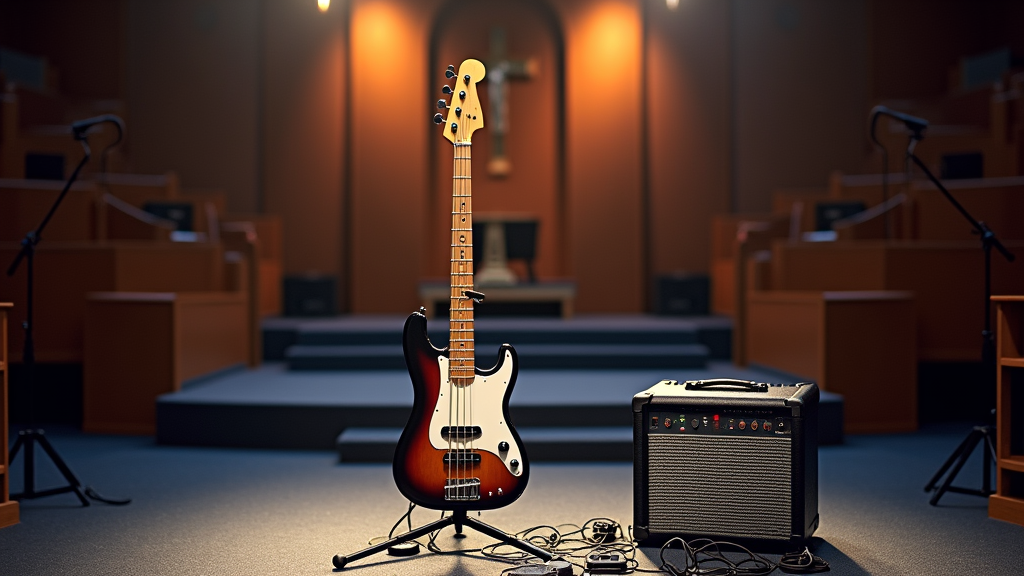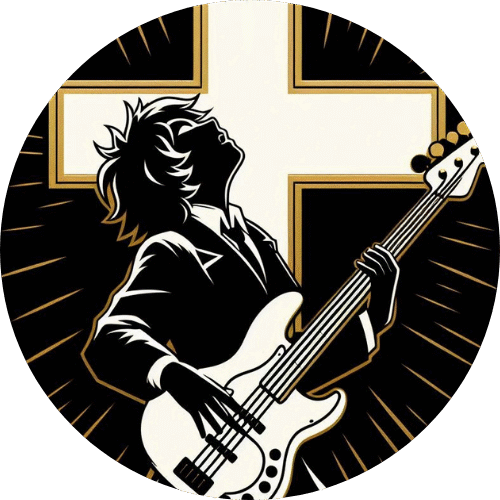Bass players hold down the groove and support the sound in any worship team. If you’re new to the scene, having the right starter gear smooths out everything from home practice to church services. With so many gear tips out there, it can get confusing, so let me lay out the must-have equipment you want as a rookie worship team bass player:

Starter Gear Every New Worship Bass Player Should Have
Getting ready to play bass on a worship team isn’t just about owning an instrument. It’s about having a few essential items within reach so you’re prepared for weekly services, rehearsals, and at-home practice. Being consistently ready means you can focus on worship, rather than scrambling for your cable or tuner at the last minute and causing distractions for yourself and your team. Here’s a rundown of what’s genuinely helpful when you’re just getting started:
Essential Gear List
- Bass Guitar: The heart of your setup. Four or five strings, new or used—choose what feels most comfortable in your hands.
- Tuner: Staying in tune is non-negotiable. Few things are more distracting to your team and the congregation than an out-of-tune instrument.
- Strap: Since most worship sets are played standing up, a comfortable strap is essential.
- Instrument Cable: Choose a length that gives you flexibility without creating clutter. Decide between straight or right-angle plugs based on your bass’s input jack and your personal preference.
- Practice Amp: Worship bassists usually plug directly into the church’s sound system or a DI (Direct Injection) box. However, having a small practice amp at home helps you hear your tone clearly and keeps you motivated to practice.
- Stand or Wall Hanger: Keeps your bass safe and within easy reach at home.
Choosing Your First Bass Guitar
Some churches provide a bass for their worship team, but having your own instrument ensures you’re always ready for practice and any playing opportunities. Try out different models if you can. Comfort is key—everyone’s hands are different, and the right fit will make long practice sessions more productive.
A 4-string bass is the standard and easily covers most Bethel- and Passion-style worship songs. For gospel styles like Israel Houghton or Kirk Franklin, a 5-string bass—with its extra low B string—gives you access to deeper tones.
Don’t stress over whether to start with 4 or 5 strings. Try both if possible and go with what feels right.
Used gear is a great way to save money. Just make sure to test it by plugging into a working amp—check for tone, playability, and major issues. Don’t worry about dings or scratches; no one is led into worship because your bass is shiny. But they will be moved by your skillful, worshipful playing on a reliable instrument.
The Unsung Hero: A Reliable Tuner
An out-of-tune bass can completely pull people out of worship. A clip-on tuner is convenient, affordable, and works well even in noisy environments. If you’re planning to build a pedalboard later, consider a pedal tuner—it lets you tune silently during live sets and smooth out transitions.
Straps: Practice Standing Up
Worship sets are usually played standing. If you only practice sitting, your posture and hand angles will shift dramatically when standing during a live service—often making bass lines harder to play. Get used to your standing setup early on.
Choose a strap that distributes weight comfortably across your shoulder. If your bass feels heavy, a padded strap can make a big difference. Adjust the bass to hang at waist level or slightly higher—too high strains your right wrist, and too low strains your left.
Cables: Stay Connected and Tangle-Free
A quality instrument cable helps you avoid those unwanted pops and dropouts mid-set. Cheap cables wear out fast and can cause noise when you least expect it.
A 15–20 ft. cable is ideal for most church stages—long enough for freedom of movement, short enough to avoid tripping. If your bass has a recessed jack, a straight plug may be better. If not, a right-angle plug can reduce stress on the jack. Already have a straight plug? No problem—just be mindful not to kick or bend it sideways.
Do You Need an Amp?
Most church setups let bass players plug directly into the soundboard or DI box, with monitoring through stage wedges or in-ears. That said, a small practice amp at home is invaluable for personal tone shaping and focused practice.
Look for a combo amp (15–50 watts) with a headphone jack for silent practice and an aux input so you can play along with tracks from your phone or laptop.
Stands and Wall Hangers: Store It Safely
Avoid leaning your bass against the wall—it’s risky. A sturdy stand or wall hanger keeps your instrument protected and encourages regular practice.
Wall hangers save floor space, and seeing your bass out in the open makes you more likely to pick it up and play.
Do You Need Pedals or Effects?
Plenty of seasoned worship bassists go straight into the DI without any pedals. But over time, you might get the itch to explore effects you hear on your favorite tracks. Add pedals as you grow—there’s no rush.
Personally, I prefer sending a clean, dry signal to the soundboard so the sound engineer can EQ it for the room. It’s a way of serving the team—trusting them to shape a unified sound that helps the congregation worship more freely.
Key Takeaways for Worship Team Bass Players
Joining a worship team as a bassist is about preparation, reliability, and a heart ready to serve. Having the right starter gear sets you up for confident practice and smooth live sets. As you grow, you’ll naturally upgrade pieces here and there—but locking in the basics now gives you a strong foundation for your journey in worship music.
Keep in mind, these are the must-have equipment to GET YOU STARTED… Be on the lookout for another post on essential tools for practicing!
